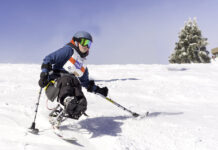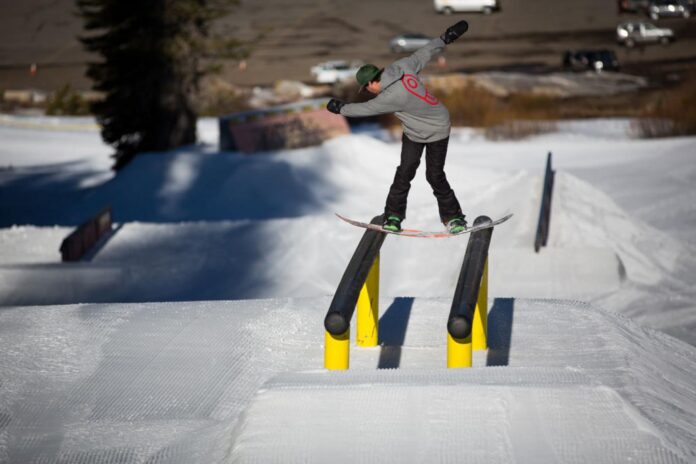
Snowboarding is a physically demanding sport that requires strength, endurance, and coordination. Many of these attributes are obtained by practicing the sport, but what can be done when the snow has melted or your schedule is too full to allow frequent get-away to mountains?
It is important to continue to exercise in a manner that trains the body to better handle the stress it must endure when snowboarding. Going to the gym and doing the elliptical trainer is not enough. The routine should be focused on making you stronger, and it should help you when you make it back to the snow.
Snowboarding requires “stop and go” endurance as well as eccentric muscle contractions. Eccentric muscle contractions mean that the muscle is lengthening while it is still producing force. This is the type of contraction used to control the landing from a jump, and used by the body to counter-act gravity.

Eccentric muscle actions are used (along with some other muscle working differently) when a person slowly lowers their arms from overhead and brings them to their side. This “lengthening while working” demand helps with injury prevention and body control. Exercises at the gym, including plyometrics, can be done to train the muscles in this fashion.
Plyometrics are also known as “jump training”. This training forces the muscles to stretch and then forcefully contract. It also forces the muscle to stretch while working to control the descent from a jump.
Jumping jacks are a good exercise to begin a plyometric program since they are low intensity but prepare the body well for other plyometric exercises. Plyometrics are well suited for snowboarding because the sport often requires controlled landings from a jump and places demand on the body to fight gravity in a controlled fashion.
This training will develop strength in the legs and activate the core/trunk muscles that will allow greater control during all snowboarding activities.
The following exercises will give you an idea of how to incorporate plyometric training into your routine.
Two foot hops: From a standing position, jump onto a step with both feet making sure to have a soft, controlled landing. The step height should be progressed from one foot up to about 3 feet.
The focus is controlled movements on the way up and down. When using a lower step, the speed of the exercise can be increased so that you spend minimal time in contact with either the bench or the floor. Start with 2-3 sets of 6-8 and progress to 3-4 sets of 8-15. If going for speed, try performing as many as possible for 20-60 seconds.
Two-foot hop downs: Starting from 2-3 foot step, jump down in a controlled manner. There should not be any thumping or other loud steps. It is important to “engage the core” during jump downs so that the trunk muscles are active and able to assist the control of the movements.
A good cue to engage the core is to focus on bringing the belly button back towards the spine. This exercise can be made more difficult by increasing the height of the step, but unlike the step up, the speed of the exercise should not be increased. Start with 2-3 sets of 6-8 and progress to 3-4 sets of 8-15.
One-legged jumps: Progress the above exercises to include jumps up and down but only using one leg. Be sure the knee is under control and that it does not track off to one side. It should move up/down and not have excess side-to-side movements. Again, core engagement is important.
Squat jumps: Start in the “up” portion of a push up position. Keep your hands on the ground and thrust your feet and legs in towards your chest. You should be full crouched. From the crouch position, jump straight up as high as you can and reach your arms overhead too.
Control the return so you have a soft landing.
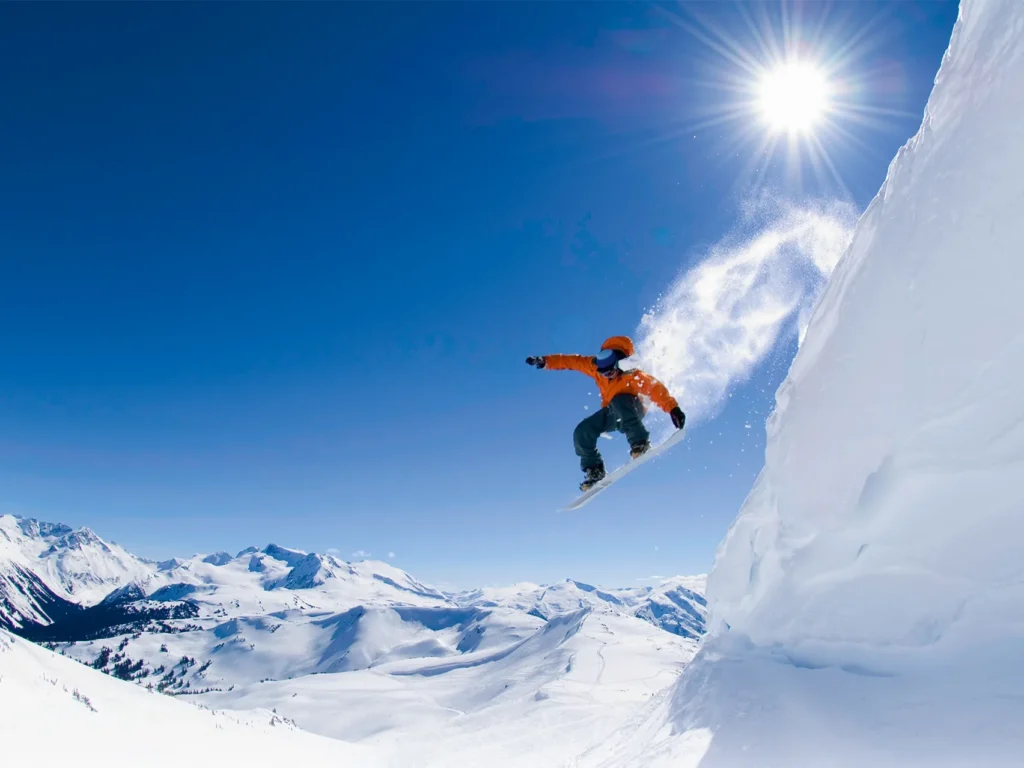
In one smooth motion, go back to the crouch position, extend the feet so that you are once again in the “up push up”. Perform 1-3 set of 8-20. It is ok to vary the speed of this exercise. Do not go fast if your landing is not soft and controlled. You can make this more difficult by jumping and/or landing on just one foot.
Tick tocks: From a standing position, squat down to a crouch so that your knees are near your chest and your hands touch the ground. Thrust your legs/feet back and at an angle (think lower body between 9 o’clock and 7 o’clock), quickly return to the crouch and then jump up.
Land softly, return to a crouch, and then thrust feet/legs back between 3 o’clock and 5 o’clock. Repeat jump. Perform 1-3 sets of 8-20. It is ok to vary the speed of this exercise. Do not go fast if your landing is not soft and controlled. You can make this more difficult by jumping and/or landing on just one foot.
Dot drill progression: Imagine yourself standing in the middle of a square. The corner of each square has a dot that will be your target. Start by jumping from the middle to the upper right, back to the middle, then upper left, back to the middle, then lower right (stay facing forward so these will be backward jumps), back to the middle and then lower left.
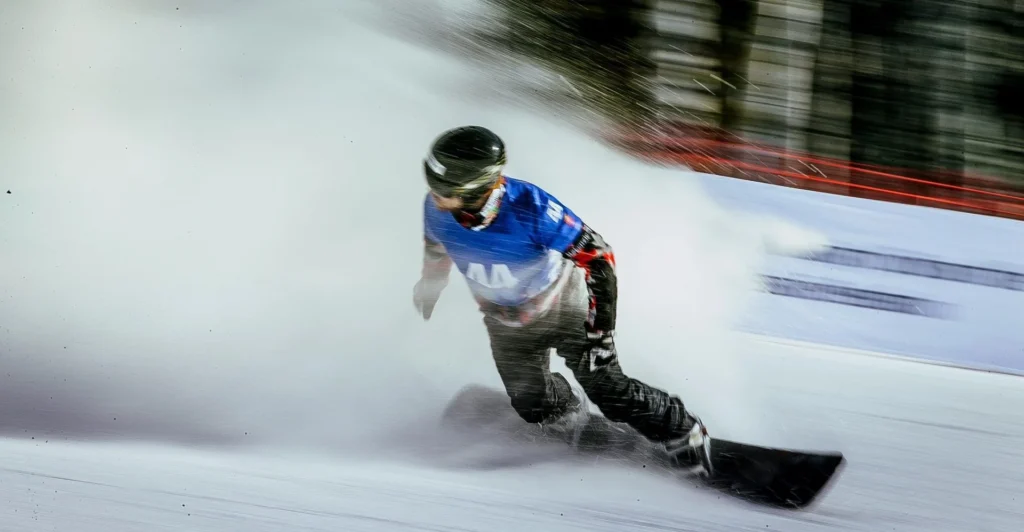
Next, do these with one leg. Progress this to add a squat when you land (middle, jump to top left, squat, quickly get up and jump back to middle) and then to a squat when landing but jumping and/or landing with one leg. Finally, attempt the same progression, but change directions in the air as you jump.
Start in the middle of the square, facing forward. Jump to top left turning your body so that you land facing the right. From this position, jump back towards middle but turn the body so that you land facing forward. Progress to one leg jump/land and then add a squat. Start with a small square, and progress it to a larger size. Again, control of the body, knee movements, and soft landings are a must have before making the exercise more difficult.
Care must be taken when performing eccentric and plyometric training. These types of training cause a lot of muscle soreness and place a high demand on the involved muscles, tendons, and related tissues. Plyometric training should begin at a low level, and gradually progress. A warm up is required before engaging in the activity to help prevent injury, and a cool down should follow as well.
The plyometric program does not need to be performed everyday, nor does it need to happen year-round. A plyometric exercise program may be 4-8 weeks long, occurring 2-4 times per week along with other forms of strength/cardiovascular training. This period of training should be followed by 3-6 weeks of continual, but plyometric free, training. Cycling the program decreases chance of injury and forces the body to constantly have to adapt to new the new demands.
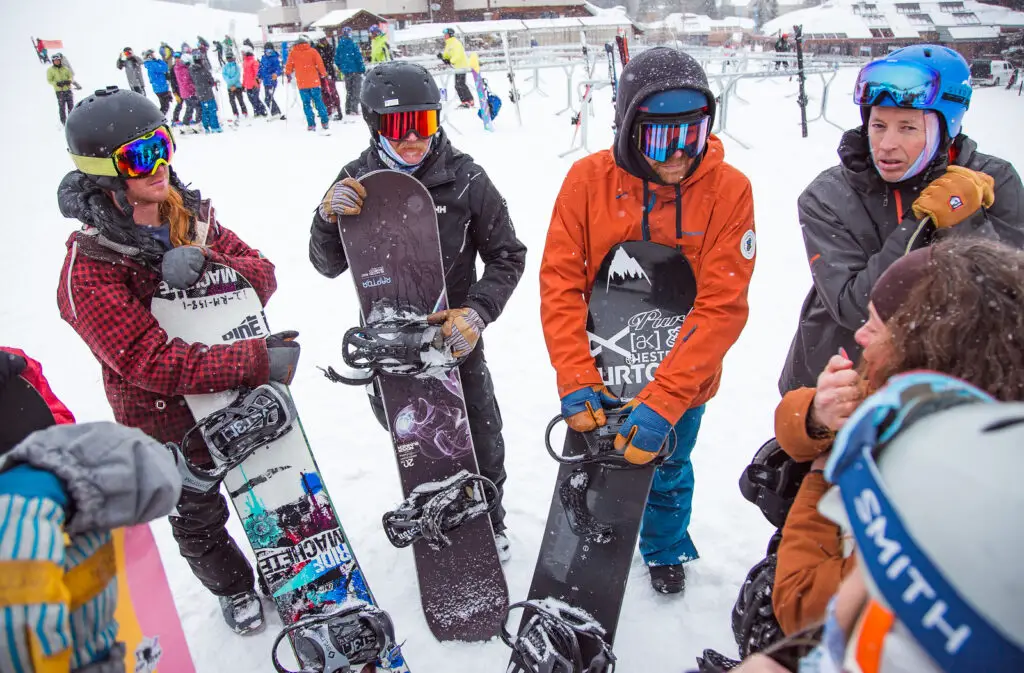
Although less of direct impact is felt on the upper body while snowboarding, the upper body cannot be ignored. The legs and core do not work independently without some reliance on the upper torso and arms.
A strong upper body helps prevent injuries after a fall and allows momentum to be transferred so that there is increased performance on the snow. Engaging in an upper body exercise routine also allows you to remain active and in better shape while giving the lower body necessary time to rest and recover.
A general upper body routine should suffice for most snowboarders. The routine should include one or two exercises per body part with 2-3 sets and a weight that allows anywhere from 10-15 repetitions. This can be done 2-3 times per week on non-consecutive days.
An upper body routine may include: push-ups, chest press, rows, lat pull down, bicep curls, triceps press, military press, and side raise. It is ok to have minimal rest in between the exercises and to do them in a circuit fashion. This will allow you to complete all sets and reps of the each exercise in about 25-35 minutes.
Remember to improve your snowboarding performance, spend your non-snow days wisely.
Set up a regular exercise routine and incorporate those exercises that will be of most benefit to your sport. For an extra boost before your workouts, consider adding pre-workout supplements to your regimen, like the ones reviewed in this Barbend article. Additionally, incorporate plyometrics and upper strengthening exercises into a well-balanced exercise plan, coupled with a sensible diet of vitamin-rich foods including plenty of antioxidant foods such as fruits and vegetables.
If taking supplements, a healthy natural supplement would be additive free organic aloe vera juice as it is naturally rich in a multitude of natural vitamins minerals and enzymes.


